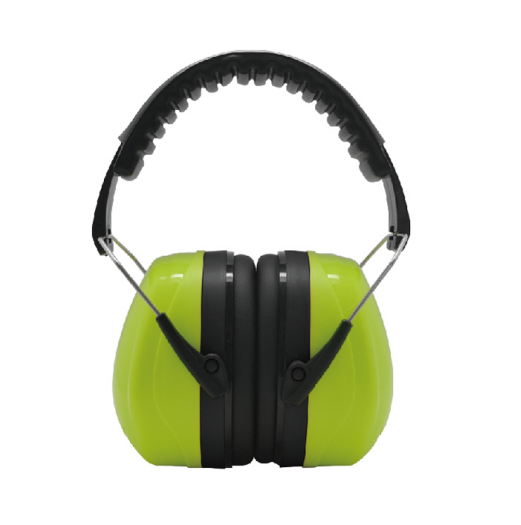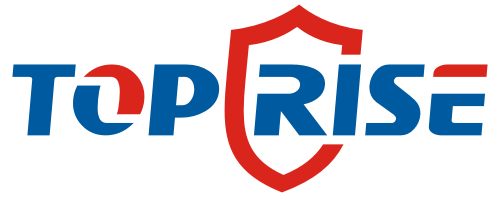TopriseSafety stands as one of the leading safety earmuffs manufacturers in China. It produces high-quality hearing protection earmuffs that meet strict industry standards. The earmuffs comply with AS/NZS 1270, ANSI S3.19-1974 and EN 352-1 certifications for top-level protection for noisy environments. TopriseSafety offers a range of foldable earmuffs for easy storage and transport.
As one of the top safety glasses suppliers and manufacturers in China, TopriseSafety also provides reliable eye protection solutions, creating a comprehensive PPE lineup. Their earmuffs feature durable, noise-canceling materials that block harmful noise levels effectively. With adjustable headbands and comfortable ear cushions, TopriseSafety products focus on both protection and comfort in various industries like construction, manufacturing, and industrial settings.
Below are some of the frequent asked questions answered by TopriseSafety for references.
1. When shall we wear safety earmuffs?
OSHA mandates that workers should not be exposed to noise levels above 90 dB for 8 hours. And NIOSH recommends a more conservative limit of 85 dB for 8 hours, with halved exposure times for every 3 dB increase in noise level. Therefore, professional safety earmuffs manufacturers often suggest using earmuffs where noise exceeds 85 dB. Try to reduce the time in noisy environments. Take regular breaks from the noise.

AS/NZS 1270, Class5 32.2dB
ANSI S3.19-1974, 26dB
2. How to test the decibels of the working environments?
Experts like TopriseSafety, one of the top safety earmuff manufacturers and suppliers in China, suggest:
Using your mobile phone.
- For Apple devices: Decibel 10th, Decibel Meter Pro, dB Meter, Sound Level Meter;
- For Android devices: Sound Meter, Decibel Meter, Noise Meter;
- For Windows phones: Decibel Meter Free, Cyberx Decibel Meter, Decibel Meter Pro
Taking advantage of your computer.
- If you’re on Windows 8, try downloading the free Decibel Reader app from the Microsoft App store. The app uses your computer’s microphone to read noises up to 96 decibels.
- Similar devices are available from the iTunes app store for Apple products.
- Use a professional decibel meter. It could be costly. But it’s more professional for high-precision nose level testing. Just get one from Amazon.
3. How do safety earmuffs work?
Earmuffs work by using sound-absorbing materials, such as foam or acoustic padding, to block out or reduce noise. This creates a seal over the ears, which lowers the intensity of sound waves. The best safety earmuffs maunufacturers China, TopriseSafety says that a quality safety earmuff shall provide a noise reduction rate up to 22dB to 34dB.
4. Can I wear earmuffs and earplugs together?
Yes, wearing both provides additional protection. This “double protection” is often recommended in extreme noise environments, as it offers higher noise reduction than either device alone.
5. what’s the difference between the marking noise reduction rate and the real effective reduction rate?
The marked Noise Reduction Rating (NRR) on products from safety earmuffs manufacturers and the real effective reduction rate differ primarily due to testing conditions versus real-world use.
Noise Reduction Rating (NRR):
- The NRR, displayed on hearing protection devices, indicates the level of noise reduction achieved under controlled lab conditions.
- In labs, manufacturers test devices with ideal fit and minimal movement, often yielding higher ratings than users experience in real life.
- For example, earmuffs with an NRR of 28 dB theoretically reduce noise by up to 28 dB in optimal conditions.
Real Effective Reduction Rate:
- Real-world conditions rarely replicate lab setups, as factors like improper fit, movement, and environmental noise impact the actual reduction.
- OSHA and other safety standards recommend an adjustment formula: subtract 7 dB from the NRR and then divide by 2 for a more realistic estimate.
- For instance, earmuffs with a marked NRR of 28 dB might effectively provide around 10.5 dB of noise reduction in typical environments.
Why This Matters
The marked NRR gives a maximum potential reduction, but the real effective reduction rate reflects likely protection levels under real-world conditions, helping users understand true hearing protection in noisy environments.
6. How to calculate the noise reduction leven when wearing earmuffs and earplugs together?
As one of the most experienced safety earmuffs manufacturers and suppliers, TopriseSafety reminds that we shall not simply add the Noise Reduction Ratings (NRR) of each device, when wearing earplugs and earmuffs together. Instead, follow a specific calculation method recommended by the Occupational Safety and Health Administration (OSHA) and other safety standards:
Step-by-Step Calculation:
Determine the NRR for each device:
- Note the NRR of the earplugs (e.g., 30 dB).
- Note the NRR of the earmuffs (e.g., 25 dB).
Calculate the Higher NRR Device First:
- Identify the higher NRR rating between the earplugs and earmuffs.
- Subtract 7 dB from the higher NRR to account for real-world usage (e.g., for 30 dB earplugs, 30 – 7 = 23 dB).
Add 5 dB for Combined Use:
- Add 5 dB to the adjusted NRR of the higher-rated device.
- For example, if the adjusted NRR of earplugs is 23 dB, add 5 dB to get a total of 28 dB.
Example Calculation:
If you wear earplugs with an NRR of 30 dB and earmuffs with an NRR of 25 dB:
- Higher NRR device (earplugs): 30 – 7 = 23 dB
- Combined reduction: 23 + 5 = 28 dB
Therefore, the effective noise reduction for wearing both earplugs and earmuffs together is 28 dB.
7. What industries need safety earmuffs?
Safety earmuffs are essential in industries like construction, manufacturing, mining, aviation, and any high-noise environments. They’re also used in shooting ranges, concert venues, and by landscapers and machinery operators. Here below are some of the noise levels collected from by renowned safety earmuffs manufacturers in China.
| Industry | Typical Noise Level (dB) | Common Noise Sources |
| Construction | 80 – 120 dB | Jackhammers, drills, heavy machinery |
| Manufacturing | 85 – 110 dB | Machinery, presses, assembly lines |
| Mining | 90 – 130 dB | Drilling, blasting, heavy equipment |
| Aviation | 130 – 140 dB | Aircraft engines (takeoff) |
| Shooting Ranges | 140 – 160 dB | Gunfire |
| Concert Venues | 100 – 120 dB | Amplified music, crowd noise |
| Landscaping and Machinery Operators | 85 – 105 dB | Lawn mowers, leaf blowers, chainsaws |
Important Note:
For any noise above 85 dB, prolonged exposure may cause hearing damage. In these settings, using proper hearing protection like earmuffs and earplugs is critical.
8. What noise levels could cause hearing loss?
TopriseSafety provides a table in details about noise levels and the associated hearing loss risks based on exposure duration. Kindly follow the guidance of professional safety earmuffs manufacturers as below:
| Noise Level (dB) | Possible Hearing Loss Risk |
| 70 dB | Prolonged exposure may cause hearing strain |
| 85 dB | Safe for up to 8 hours |
| 90 dB | Safe for up to 4 hours |
| 100 dB | Safe for up to 2 hours |
| 110 dB | Safe for up to 30 minutes |
| 120 dB | Hearing damage likely within 7.5 minutes |
| 130 dB | Hearing damage likely within 2 minutes |
| 140 dB+ | Immediate hearing damage |
9. What is the Noise Reduction Rating (NRR)?
The NRR is a rating that indicates the earmuff’s effectiveness at reducing noise. Higher NRR values mean greater noise reduction. Most earmuffs have NRR ratings between 20-34 decibels.
10. How should I select the right earmuffs?
Consider the environment’s noise level, earmuff comfort, durability, and features like adjustable headbands or foldable designs. Choose a pair that has a sufficient NRR rating for your noise exposure.
11. What’s the difference between earmuffs and earplugs?
Earmuffs cover the entire ear, while earplugs are inserted into the ear canal. Earmuffs are often more comfortable for extended use but may be bulkier than earplugs, which are more discreet and easier to wear with other PPE.
12. How should I care for and maintain my earmuffs?
Wipe earmuffs regularly to keep them clean, especially the cushions. Store them in a dry, dust-free area, and replace ear cushions or seals as they wear out.
13. How long do earmuffs last?
With proper care, quality earmuffs can last several years. Replace them if you notice any wear, reduced comfort, or compromised noise reduction.
14. Are safety earmuffs safe to wear for long periods?
Yes, but it’s essential they fit well and remain comfortable. Many earmuffs are designed with soft padding and adjustable headbands to support prolonged use.
15. What are some leading brands for safety earmuffs?
Trusted brands include 3M, Honeywell, Howard Leight, and Peltor, TopriseSafety known for durability, comfort, and effective noise reduction.
16. What are the types of earmuffs?
Click here and check another blog written by TopriseSafety.
17. Where can we get certified safety earmuffs?
TopriseSafey is one of the top safety earmuffs manufacturers and suppliers in China with certificates like AS/NZS 1270 for Australia and New Zealand markets, EN 352-1 for Europe markets and ANSI S3.19-1974 for North America markets. Here are some of the certified earmuffs catalogues for reference from TopriseSafety.


